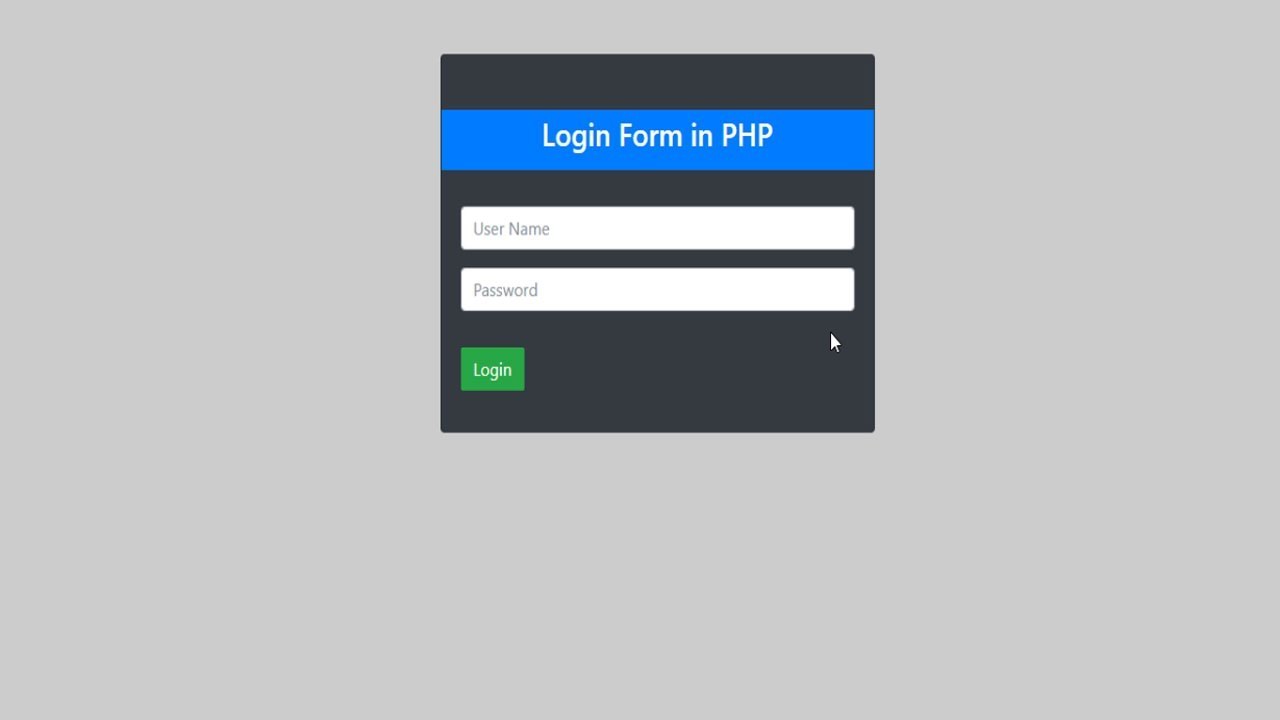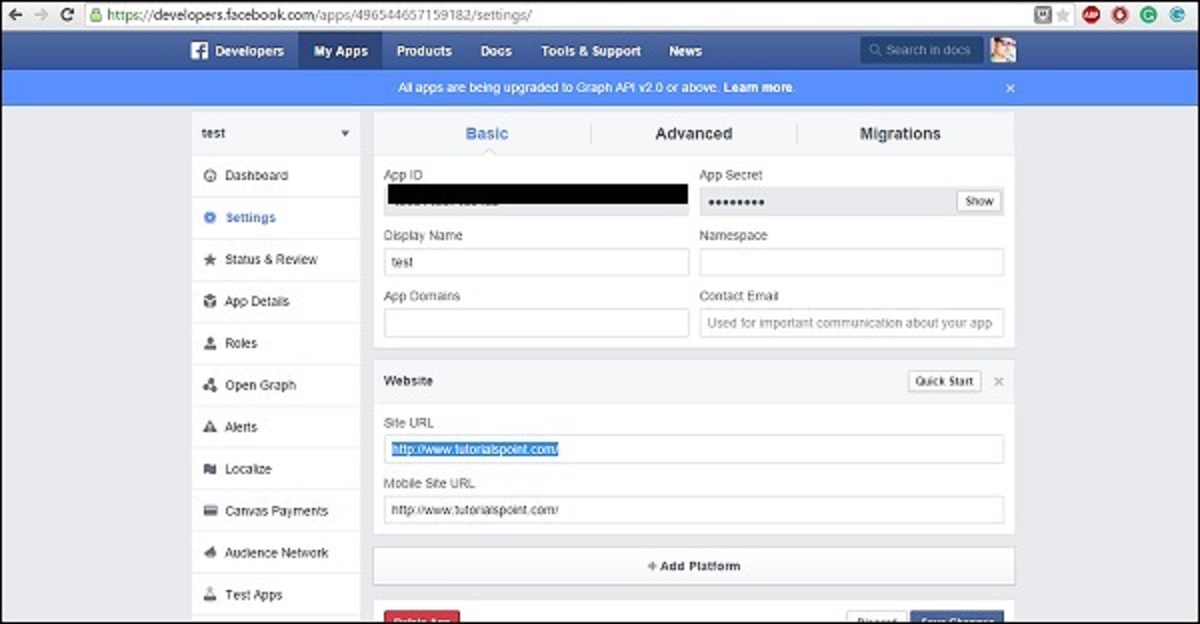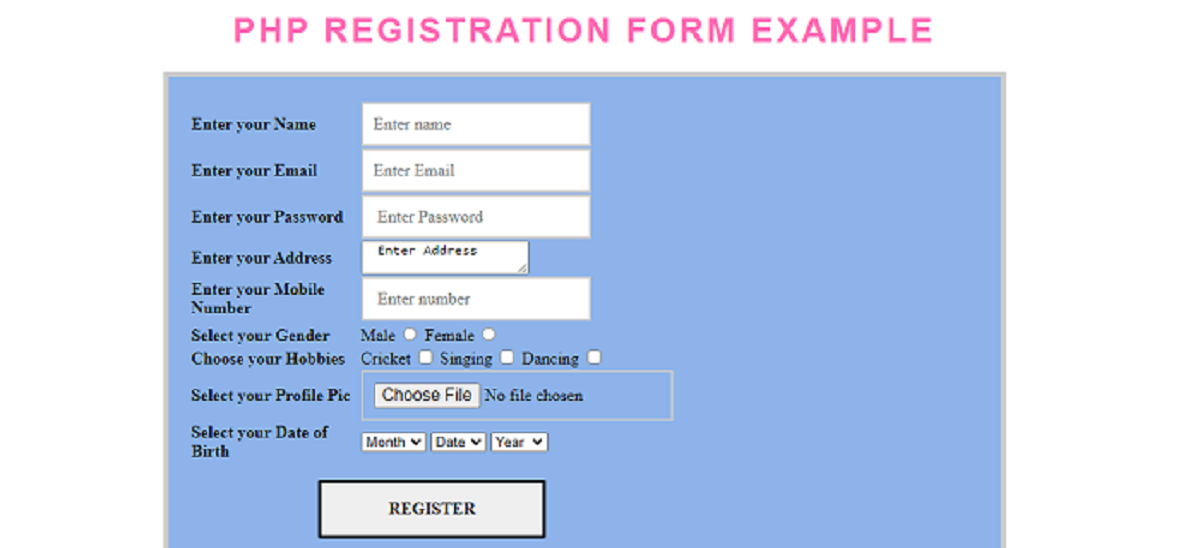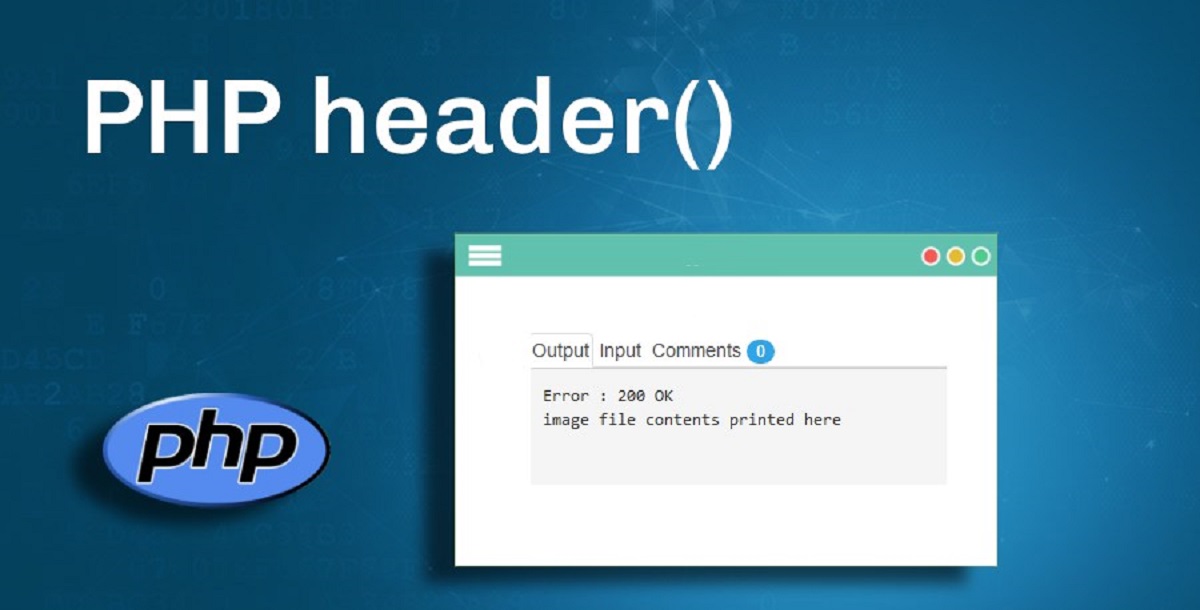Introduction
Welcome to our guide on how to redirect in PHP. If you are a developer or a website owner, you may at some point need to redirect users from one page to another. PHP (Hypertext Preprocessor) provides various methods to accomplish this, allowing you to control the flow of users and direct them to the appropriate content.
But what exactly is a redirect? In simple terms, a redirect is a way to automatically send users from one URL to another. It is commonly used when a specific page or resource has been moved or deleted, or when you want to direct users to a different section of a website. Redirects are also crucial for maintaining SEO (Search Engine Optimization) and ensuring that visitors have a seamless browsing experience.
In this article, we will explore different methods of redirecting in PHP and highlight best practices to ensure smooth and efficient redirects. Whether you are a beginner or have some experience in PHP, this guide will equip you with the knowledge and skills to implement redirects effectively.
Now let’s dive into the various methods you can use to redirect in PHP and learn how to choose the right method for your needs.
What is PHP Redirect?
PHP redirect is a technique that allows you to direct users from one web page to another using PHP code. It is an essential feature for web developers and website owners to control the flow of user navigation and provide a seamless browsing experience.
When a user enters a URL or clicks on a link, the server processes the request and sends back a response. Through PHP redirects, you can modify this response and instruct the browser to automatically navigate to a different URL. This can be useful in several scenarios:
1. Moved or Deleted Content: When you change the URL of a webpage or remove it from your website, you can redirect users to an alternative page. This ensures that if someone tries to access the old URL, they will be automatically directed to the new location or a relevant page.
2. Error Handling: In cases of invalid or non-existent URLs, you can redirect users to a custom error page, such as a 404 page, to provide better user experience and guidance.
3. Restricting Access: If you have certain pages or sections that require authentication or specific permissions, you can redirect unauthenticated or unauthorized users to a login page or an access denied page.
4. A/B Testing: Redirects can be used to conduct A/B testing by sending users to different versions of a webpage and tracking their behavior or preferences.
PHP redirecting provides flexibility and control over the redirection process, allowing you to dynamically handle different situations based on your website’s requirements.
Now that we understand what PHP redirect is and its significance, let’s explore the various methods available to implement redirects in PHP.
Why Redirect in PHP?
Redirecting in PHP serves various important purposes that can enhance the functionality and user experience of a website. Let’s look at some key reasons why redirects are commonly used:
1. Page Maintenance: When you need to make changes to your website, such as updating URLs, restructuring content, or removing pages, redirects ensure that users are seamlessly directed to the new or relevant content. This helps to maintain a smooth user experience and prevents them from encountering broken links or error messages.
2. SEO Optimization: Redirects play a crucial role in maintaining your website’s search engine rankings. When you permanently move or delete a page, using a redirect (specifically a 301 redirect) informs search engines that the page has permanently moved to a new URL. This allows search engines to update their indexes accordingly and transfer the SEO value of the old page to the new one, ensuring that your website maintains its visibility in search results.
3. User Navigation: Redirects help to guide users to the most relevant content on your website. For example, if a user enters your website through an old URL or a non-existent page, you can redirect them to a default landing page or a more appropriate section of your website. This improves user experience by ensuring they find the desired information without getting lost or confused.
4. Error Handling: Redirects can be used to handle errors and provide users with helpful information. For example, if a user enters a URL incorrectly or tries to access a restricted page, instead of displaying a generic error message, you can redirect them to a custom error page that provides more specific instructions or suggests alternative resources.
5. Enhancing Conversions: Redirects can be used strategically to improve conversion rates. For instance, if you are running a marketing campaign and want to track the performance of different promotional links, you can redirect users to specific landing pages or trackable URLs. This allows you to analyze the effectiveness of your campaigns and optimize them accordingly.
Overall, implementing redirects in PHP helps you maintain the integrity and usability of your website, optimize it for search engines, guide users to relevant content, and enhance the overall user experience.
Now that we understand the importance of redirects, let’s explore the different methods available to redirect in PHP.
Different Methods of Redirecting in PHP
PHP offers multiple methods to redirect users from one page to another. Each method has its own benefits and use cases. Let’s explore four commonly used methods:
-
1. Using the header() function: This method utilizes the PHP header() function to send a Location header to the browser, indicating the new URL to redirect to. It is the most common and efficient way to perform redirects in PHP. Here’s an example:
header("Location: new_page.php"); -
2. Using JavaScript window.location: Another approach is to use JavaScript to redirect the user. This method can be useful in scenarios where you need to perform additional operations or checks before the redirect. Here’s an example:
echo '<script>window.location.href = "new_page.php";</script>'; -
3. Using HTML Meta Tag: You can also redirect users using an HTML meta tag placed in the head section of your web page. This method is particularly useful when you want to specify a delay before the redirect or display a message to users before they are redirected. Here’s an example:
<meta http-equiv="refresh" content="5;URL='new_page.php'"> -
4. Using the HTTP Status Code: In some cases, you may want to use HTTP status codes to indicate a redirection. This method can be useful when you need to handle SEO-related redirects or indicate temporary redirects. Here’s an example using the 301 status code for a permanent redirect:
header("HTTP/1.1 301 Moved Permanently"); header("Location: new_page.php");
Each method has its own advantages and specific use cases. When choosing a method, consider factors such as performance, compatibility, SEO implications, and the requirements of your specific use case.
Now that we have explored the different methods of redirecting in PHP, let’s move on to best practices for implementing redirects effectively.
Using the header() Function
The header() function in PHP is a popular and efficient method used to perform redirects. It allows you to send an HTTP header to the browser, instructing it to redirect to a different URL. Here’s a closer look at how to use this method:
First, you need to call the header() function with the “Location” header parameter and the URL you want to redirect to. For example:
header("Location: new_page.php");Make sure to call the header() function before any output is sent to the browser. Otherwise, you may encounter errors. It is best to place the redirect code at the top of your PHP file.
In addition to specifying the new URL, you can also add an optional HTTP response status code. The most commonly used status codes for redirects are:
- 301 (Moved Permanently): Indicates that the page has permanently moved to a new URL. This is useful for SEO purposes, as it informs search engines to update their indexes.
- 302 (Found): Indicates a temporary redirect to a different URL. This is commonly used when performing maintenance or testing on a website.
To implement a redirect with a specific status code, you can use the header() function twice, as shown below:
header("HTTP/1.1 301 Moved Permanently");
header("Location: new_page.php");Remember to replace “new_page.php” with the actual URL you want to redirect to.
Using the header() function for redirects is efficient and widely supported by different browsers and platforms. However, there are certain considerations to keep in mind:
- Ensure that there is no output sent to the browser before calling the
header()function to avoid any “headers already sent” errors. - If you are redirecting to an external URL, make sure it begins with “http://” or “https://”.
- Consider the potential SEO impact when choosing between a 301 (permanent) or 302 (temporary) redirect.
- Test the redirect thoroughly on different browsers and devices to ensure compatibility.
Using the header() function provides a straightforward and efficient way to perform redirects in PHP. It is widely used and offers good control over the redirection process.
Next, let’s explore another method of redirecting in PHP using JavaScript’s window.location property.
Using JavaScript window.location
Another method for redirecting in PHP is by utilizing JavaScript’s window.location property. This approach allows you to incorporate additional logic or conditions before performing the redirect. Here’s a closer look at how to use this method:
To redirect users using JavaScript, you can output a <script> tag with the JavaScript code that modifies the window.location.href property. This property specifies the URL to which the browser should navigate. Here’s an example:
echo '<script>window.location.href = "new_page.php";</script>';With this method, you can add conditional statements or perform checks before redirecting to a new page. For example, you can check if a user is authenticated before redirecting them to a restricted area:
if ($authenticated) {
echo '<script>window.location.href = "restricted_area.php";</script>';
} else {
echo '<script>window.location.href = "login.php";</script>';
}Using JavaScript for redirection allows you to incorporate dynamic behaviors and conditions as needed. However, keep in mind the following considerations:
- Ensure that the JavaScript code is outputted within a
<script>tag and placed correctly within your PHP file. - Make sure to handle cases where JavaScript is disabled on the user’s browser, as the redirect may not be executed.
- Test the redirect thoroughly on different browsers and devices to ensure compatibility with JavaScript.
Utilizing JavaScript’s window.location property provides you with the flexibility to add conditional logic and perform checks before redirecting users. It can be beneficial in scenarios where you need to incorporate additional dynamic behavior during the redirection process.
Next, let’s explore another method of redirecting in PHP using an HTML meta tag.
Using HTML Meta Tag
Redirecting in PHP can also be achieved using an HTML meta tag placed in the <head> section of a web page. This method provides a way to specify the redirect without the need for server-side code. Let’s take a closer look at how to use this method:
To perform a redirect using an HTML meta tag, you need to include the <meta> tag with the “http-equiv” attribute set to “refresh”. The “content” attribute specifies the number of seconds to wait before redirecting and the new URL to redirect to. Here’s an example:
<meta http-equiv="refresh" content="5;URL='new_page.php'">In this example, the number “5” indicates a delay of 5 seconds before redirecting to the URL specified in the “content” attribute. Make sure to replace “new_page.php” with the actual URL you want to redirect to.
Using an HTML meta tag for redirection provides a simple and straightforward approach. It can be useful in situations where you want to display a brief message or provide additional information to the user before redirecting them to a new page.
However, there are a few considerations to keep in mind:
- Ensure that the meta tag is placed within the
<head>section of your HTML document. - Consider the impact on SEO, as search engine crawlers may interpret the meta tag redirect differently compared to server-side redirects.
- Test the redirect on different browsers to ensure compatibility.
Using an HTML meta tag is a convenient method for redirecting in PHP without relying on server-side code. It provides a quick way to perform redirects, particularly when a delay or additional information is desired before the redirection.
Next, let’s explore another method of redirecting in PHP using the HTTP status code.
Using the HTTP Status Code
In PHP, you can also perform redirects by utilizing the HTTP status code. This method involves sending the appropriate response header along with the desired URL to redirect to. Let’s take a closer look at how to use this method:
To redirect using the HTTP status code, you need to set the appropriate status code header using the header() function. For example, to perform a permanent redirect (status code 301 Moved Permanently), you can use the following code:
header("HTTP/1.1 301 Moved Permanently");
header("Location: new_page.php");In this example, the first header() call sets the status code, and the second header() call specifies the URL to redirect to.
You can also use other status codes for different scenarios. For example, the status code 302 (Found) indicates a temporary redirect:
header("HTTP/1.1 302 Found");
header("Location: temporary_redirect.php");Using HTTP status codes for redirecting allows you to convey specific information to both web browsers and search engines about the nature of the redirect. This can have implications for SEO and how other systems handle the redirection.
When using this method, keep the following considerations in mind:
- Set the appropriate HTTP status code based on the nature of the redirect (permanent, temporary, etc.).
- Make sure to call the
header()function before any content is sent to the browser to avoid errors. - Test the redirect on different browsers to ensure compatibility and proper handling of the status code.
Using HTTP status codes adds specificity to your redirects and can provide additional information to web browsers and search engines. However, it requires careful consideration of the appropriate status code for the redirect you wish to achieve.
Now that we have explored different methods of redirecting in PHP, let’s move on to best practices for implementing redirects effectively.
Best Practices for PHP Redirects
Implementing redirects in PHP requires careful consideration to ensure smooth functioning and optimal user experience. Here are some best practices to follow when working with PHP redirects:
- Choose the right redirect method: Consider the purpose of the redirect and choose the appropriate method accordingly. The header() function is generally recommended for most scenarios, but JavaScript or HTML meta tags may be more suitable in specific cases.
- Handle redirect loops: Be cautious to avoid creating redirect loops where a page redirects to itself or in a circular manner. This can lead to an infinite loop and prevent users from accessing the desired content.
- Redirect with the exact URL: Ensure that the URL provided in the redirect is accurate, complete, and not missing any necessary query parameters or fragments. This helps users and search engines reach the intended destination accurately.
- Consider SEO implications: For permanent redirects, use a 301 status code to indicate that the original URL has permanently moved to a new location. This helps search engines update their indexes and preserve the SEO value of the original page.
- Test and validate redirects: Thoroughly test your redirects on different browsers and devices to ensure consistent behavior. Validate your code to check for any potential errors or improper syntax that could impact the redirect functionality.
- Consider user experience: When redirecting users, ensure that they are redirected to the most relevant and useful content. Avoid overly aggressive or unnecessary redirects, as they can annoy users and negatively impact their browsing experience.
- Keep track of redirected URLs: Maintain a record or log of redirected URLs to track any changes or identify any issues that may arise. This is particularly helpful when managing larger websites with numerous redirects.
By following these best practices, you can ensure that your PHP redirects are well-implemented, efficient, and provide a positive experience for your website users.
Now that we have covered the best practices, let’s conclude our guide on redirecting in PHP.
Conclusion
Redirecting in PHP is a valuable technique for controlling user navigation, maintaining SEO, and providing a seamless browsing experience. By employing the various methods discussed in this guide, you can effectively redirect users to the appropriate pages and ensure that your website remains accessible and user-friendly.
We explored several methods for performing redirects in PHP, including using the header() function, JavaScript window.location, HTML meta tags, and HTTP status codes. Each method has its own advantages and use cases, so it’s crucial to choose the most suitable approach based on your specific requirements.
When implementing redirects, it is essential to follow best practices such as selecting the right redirect method, handling redirect loops and ensuring accurate URLs. You should also consider SEO implications, test your redirects thoroughly, and prioritize a seamless user experience.
Remember, redirects should be used judiciously and with a clear purpose in mind. Avoid excessive or unnecessary redirections, as they can frustrate users and potentially harm your search engine rankings.
With the knowledge gained from this guide, you are now equipped to effectively use PHP redirects to enhance your website’s functionality, maintain SEO, and provide a smooth user journey. Keep these techniques in mind as you work on your PHP projects, and always strive to create an intuitive and seamless browsing experience for your users.

























